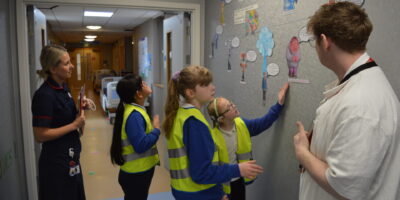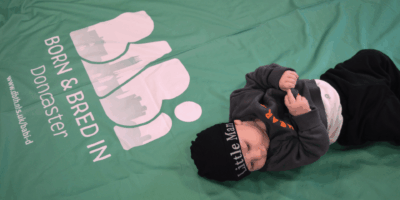If patients need hospital care and treatment, upon admission we have different pathways (known as ‘yellow’ and ‘blue’) for inpatients to follow.
For those patients where the clinical picture looks like there is a respiratory illness that might be Covid-19, they would come through the yellow pathway. They are swabbed and tested for Covid-19 as soon as possible in the Emergency Department before being admitted again along the yellow pathway to the yellow part of Acute Medical Unit (AMU) at Doncaster Royal Infirmary or Acute Treatment Centre (ATC) at Bassetlaw Hospital, or into a side room if they come through as a surgical patient.
Most of the time, those patients who come in because they have respiratory symptoms go through medicine and AMU as this is the main reason for admission. The results of the tests take time to turnaround, but even where an admission screen is negative, it is important to note that a person can incubate (be cooking) the virus for anything up to 14 days from exposure. We therefore screen again at day five, this is to check again whether the person is positive or negative – with all appropriate safeguards in place in the meantime.
The blue and yellow theme goes through our wards. For example Respiratory Unit has a blue side and a yellow side, those with negative admission swabs but where they need specialist care by respiratory doctors and nurses will go to the blue side of the respiratory ward. Those who are positive on admission screen will go to the yellow side of the Respiratory Unit. Processes are in place between both to ensure we minimise any risk of cross-infection, as well, when possibly, separate teams.
Unfortunately because Covid-19 is such a challenging illness, despite our best efforts we will sometimes find out a patient is in fact positive, following the production of a number of negative swabs. This is due to the above mentioned incubation period, which can occur anywhere from the day of admission to 14 days after.
While we try to minimise the likelihood of this occurring with testing, observations and other interventions, if this does occur, we nurse Covid-19 positive patients in side rooms or cohorted behind doors wherever possible, and again we always try to have separate teams of nursing staff caring for the positive patients to those caring for the negative.
We have extra cleaning happening and regular cleaning of frequent touch surfaces like door handles, phones, keyboards anything where Covid-19 may be taken on the hands and deposited and expose other hands to then spread it about.
The other aspect is where Covid-19 in advertently enters the hospital on people such as visitors. The way we try and safeguard this is by having restrictions to visiting for all but exceptional circumstances, asking all visitors questions about whether they have symptoms or have come into contact with anybody who has been symptomatic or positive and taking their temperature. We also ask all visitors and outpatients to wear a mask.
Finally, we have screening protocols to help us manage placement of patients as well, so if a patient has tested positive, we will screen again at day 14 and if they remain positive will screen them every seven days until negative. If negative, we screen again at 28 days. The more surveillance swabbing we do like this, the more we uncover Covid-19 and give it fewer places to hide and, as such, we can then ensure we further minimise any risk of cross-infection.



